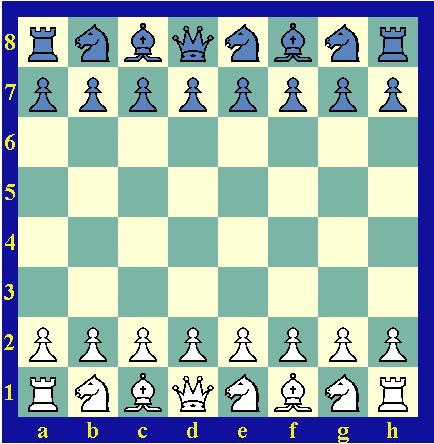Triumvirate Chess
By Paul DeWitte
Introduction
This game uses the same pieces and rules as regular Chess except for these differences:
Setup
There is no King. Rather, there are three Knights, called "Caesars". The third Knight begins at the position occupied by the King in regular chess.

Pieces
The Pawns are called "Centurions". They have the traditional Pawn move, except they also have a special capture prerogative with respect to capturing Knights (Caesars). The Centurion can also capture the Caesar straight ahead, not just on the diagonal. The en passant Centurion (Pawn) capture is not permitted. Centurions (Pawns) cannot promote to Caesars (Knights).
Rules
There is no formal checkmate until two of the Knights (Caesars) have been captured. At that point, the third Knight or "Caesar" (i.e. the one remaining) loses his Knight-like moves, and must move as a traditional King does.
Castling is not permitted.
Notes
One of the advantages of this game is that it reduces the number of "quick victories". A student can't lose by having his King mated in just a few moves. On the other hand, it doesn't prolong the agony of a sure loss, because the third (remaining) Caesar loses most of his powers upon the capture of the second Caesar, facilitating a quick end. Another advantage of this game is that, by making the traditional Knight-moving pieces the main pieces, the students gets to practice moving a piece that has a rather unique and sometimes difficult-to-grasp movement.
Computer Play
You can also play this game using the web-based Game Courier system on this site. Start at the link here.
Equipment
Standard chess equipment may be used.
Credits
